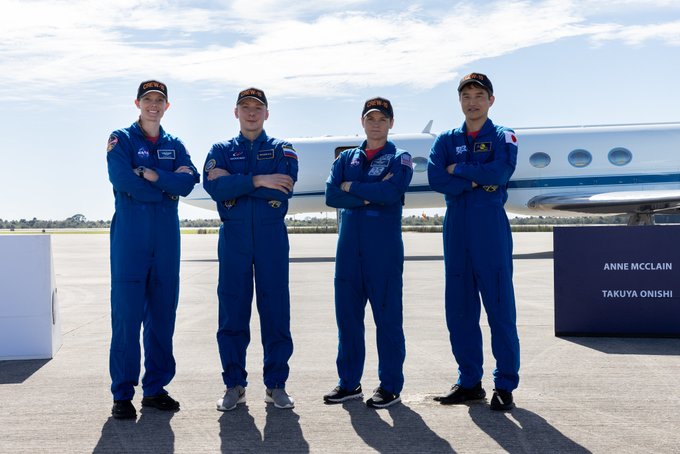Suni Williams and Butch Wilmore spent a staggering 286 days in space despite only planning on an eight day trip, and one doctor has revealed exactly how long it’ll take for their bodies to recover following their return to Earth.
Technical issues with both their Boeing Starliner craft and the SpaceX spaceship that was set to rescue them from the International Space Station (ISS) meant that Williams and Wilmore spent an unbelievably long nine months away from their homes.
While they did manage to conduct some fascinating research and undergo a number of spacewalks that will be on any astronaut’s bucket list, they also had to contend with a number of health issues that are expected when you spend that long in low gravity conditions.

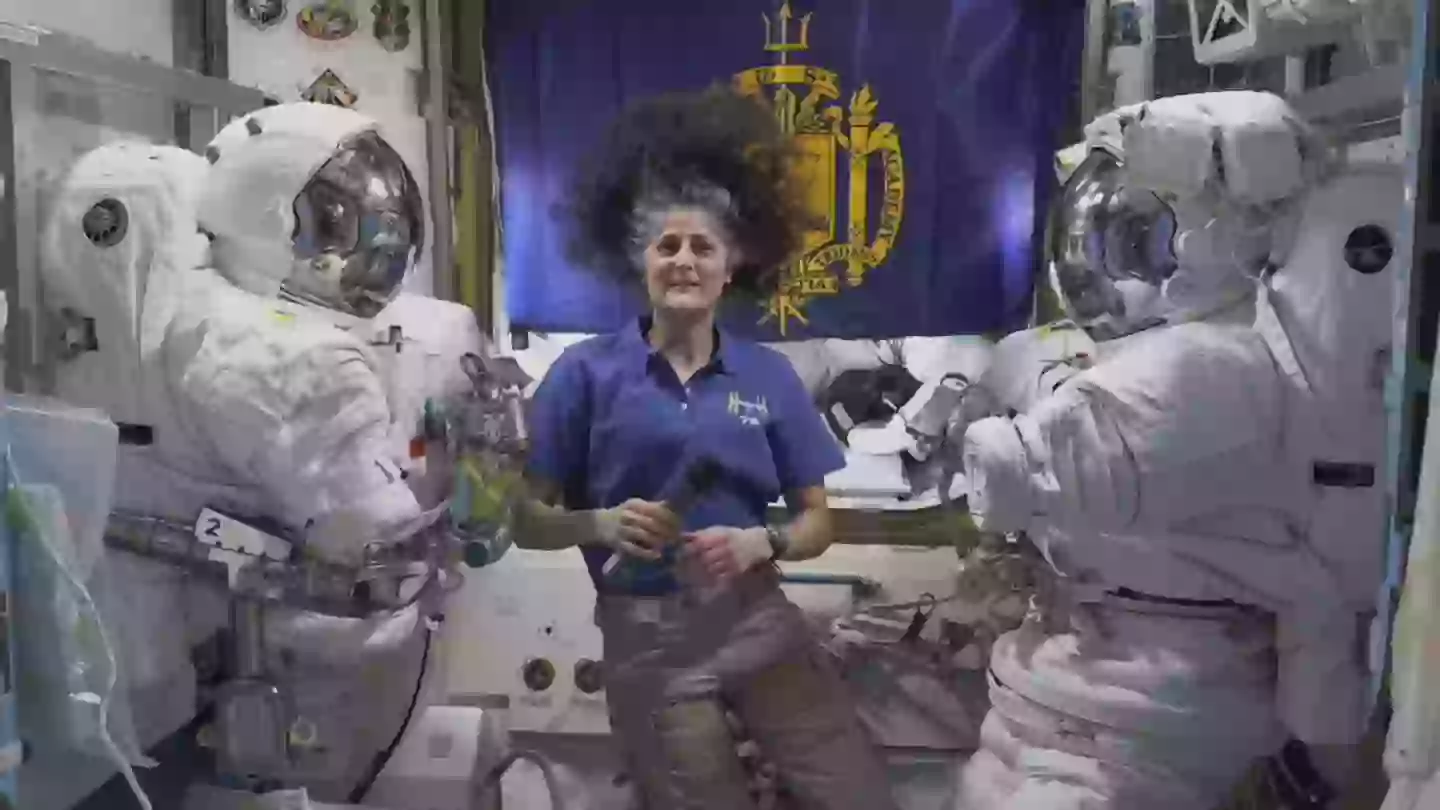
Williams and Wilmore spent 286 days in space, and their bodies will have to adjust to life back on Earth (YouTube/NASA Video)
Many became concerned over photos revealed Williams’ ‘gaunt’ appearance, and while NASA assured everyone that both were fine health wise, this was indeed a natural consequence of living on board the ISS.
Low gravity conditions mean that your muscles have to work far less, and even with rigorous daily exercise it’s still not enough to stop you from losing muscle mass and running into bone density issues.
That’s why both had to be immediately stretchered off to a medical facility following their long-awaited landing off the coast of Florida, and one doctor has revealed exactly how long it’ll take before their bodies return to ‘normal’.
Speaking to Fox News, Weill Cornell Medicine professor Dr. Christopher Mason indicated: “All of it is, at least on some measures… all transient. Most of it is a response to space flight, and usually in a few weeks they’re mostly back to normal. It’s the first few days that are the most really dynamic when they get back to Earth.”
One former astronaut has added a different perspective though, as while a few weeks might be enough to be ‘normal’ from a medical perspective, the actual feeling of being back on Earth takes far longer to get used to.
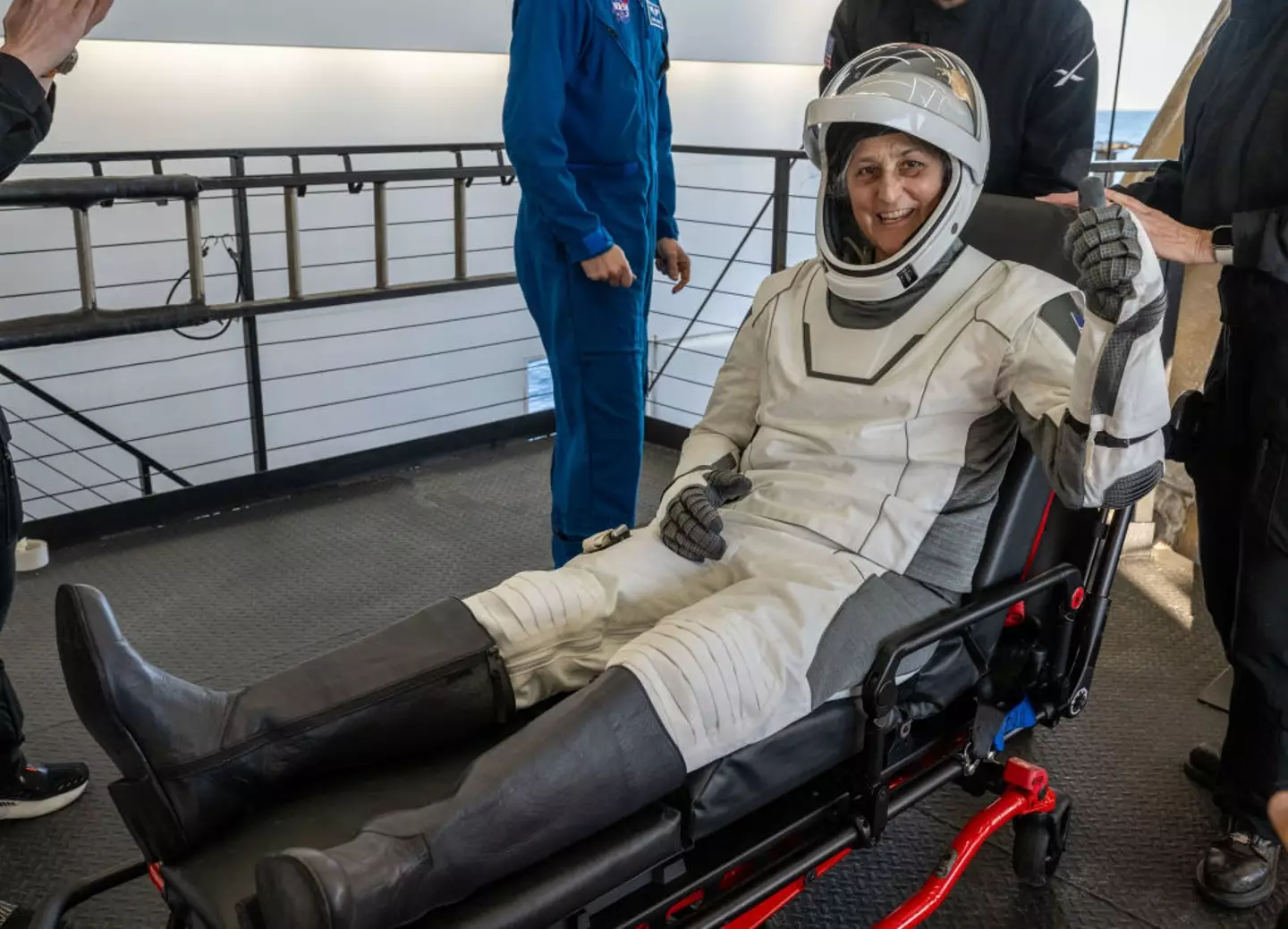

Both astronauts were immediately stretchered to a medical facility, where they will undergo a six-week physical rehab program (Keegan Barber/NASA via Getty Images)
“I remember my first two words when I came down was, ‘Gravity sucks’,” revealed Jose M. Hernandez, “because your body starts adapting, and you’ve got to recalibrate your vestibular balance system. It’s going to take a couple of months before they feel kind of normal back here on Earth.”
Muscle loss is far from the only side effect that they’ll have to contend with though, as it’s highly likely that they’ll have ‘baby-like skin’ that’s hypersensitive towards clothing as they’ll be used to it floating above their body while on the ISS.
Additionally, former astronaut Chris Hadfield has revealed that staying in space can even affect how you talk: “Right after I landed, I could feel the weight of my lips and tongue and I had to change how I was talking,” Hadfield illustrated. “I hadn’t realized that I had learned to talk with a weightless tongue.”
What has become clear though, at least in the case of Suni Williams, is that this will be the last time that she has to deal with the rehabilitation period, as she’s pointed to the fact that this will likely be her final space mission.
Williams also pointed out while on board the International Space Station that she was trying to remember how to walk again, which shows how drastic the changes astronauts have to deal with that a relatively short period of time away from Earth in the grand scheme of things can have such major ramifications on the basic functions of daily life.
Featured Image Credit: Flickr / NASA


It’s nearly time for stranded astronauts Butch Wilmore and Suni Williams to finally return from the International Space Station back to Earth, but one doctor has revealed a shocking admission regarding what happens to their bodies after spending 9 months in space.
The eyes of the world have been fixed on Williams and Wilmore’s strange and arduous trip to the International Space Station (ISS), as what was supposed to just be a simple eight day mission back in June 2024 has continued for over nine months now.
Issues with both their Boeing Starliner and the SpaceX Crew-10 Dragon spacecraft that would allow them to return home have left them ‘stranded’ upon the ISS, and only next week will they finally return back home to their families – something that has been extremely challenging for Williams.
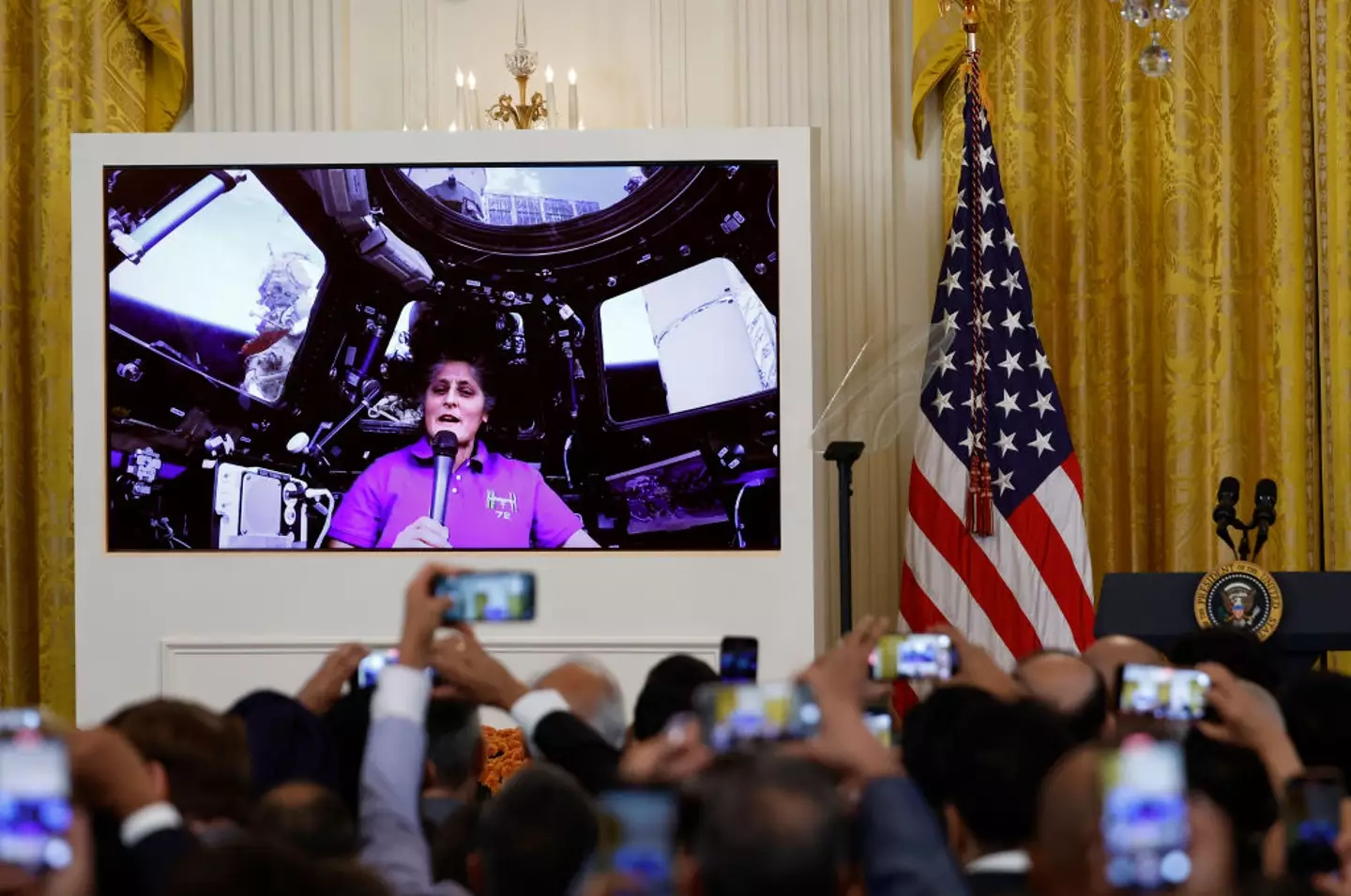

Williams and Wilmore have been ‘stranded’ upon the ISS since June last year (Kevin Dietsch/Getty Images)
While there has been significant debate surrounding the reason for the delay, with SpaceX CEO Elon Musk placing the blame on the former Biden administration for the hold up after US President Donald Trump asked him to ‘go get’ the pair, but the most important thing for now is that their long wait is nearly over.
It’s not all sunshine and roses though, as their return could indicate some major health problems that come as a part of spending such a long time in space.
During their stay on the International Space Station many began to grow concerned about their appearance – Thankfully NASA clarified that everything is fine and there’s nothing to worry about, but there remains a major issue that they’ll both have to power through almost immediately after landing.
Much like the Crew-8 astronauts that returned last October, Williams and Wilmore will have to be immediately admitted to a medical facility on stretchers, in which they will undertake a six-week rehabilitation program in order to regain their strength.
Suni Williams has previously commented on the challenges that she’ll have to face in relearning how to walk, and they’ve both had to undertake rigorous exercises while on board the ISS in order to avoid a dangerous health condition.
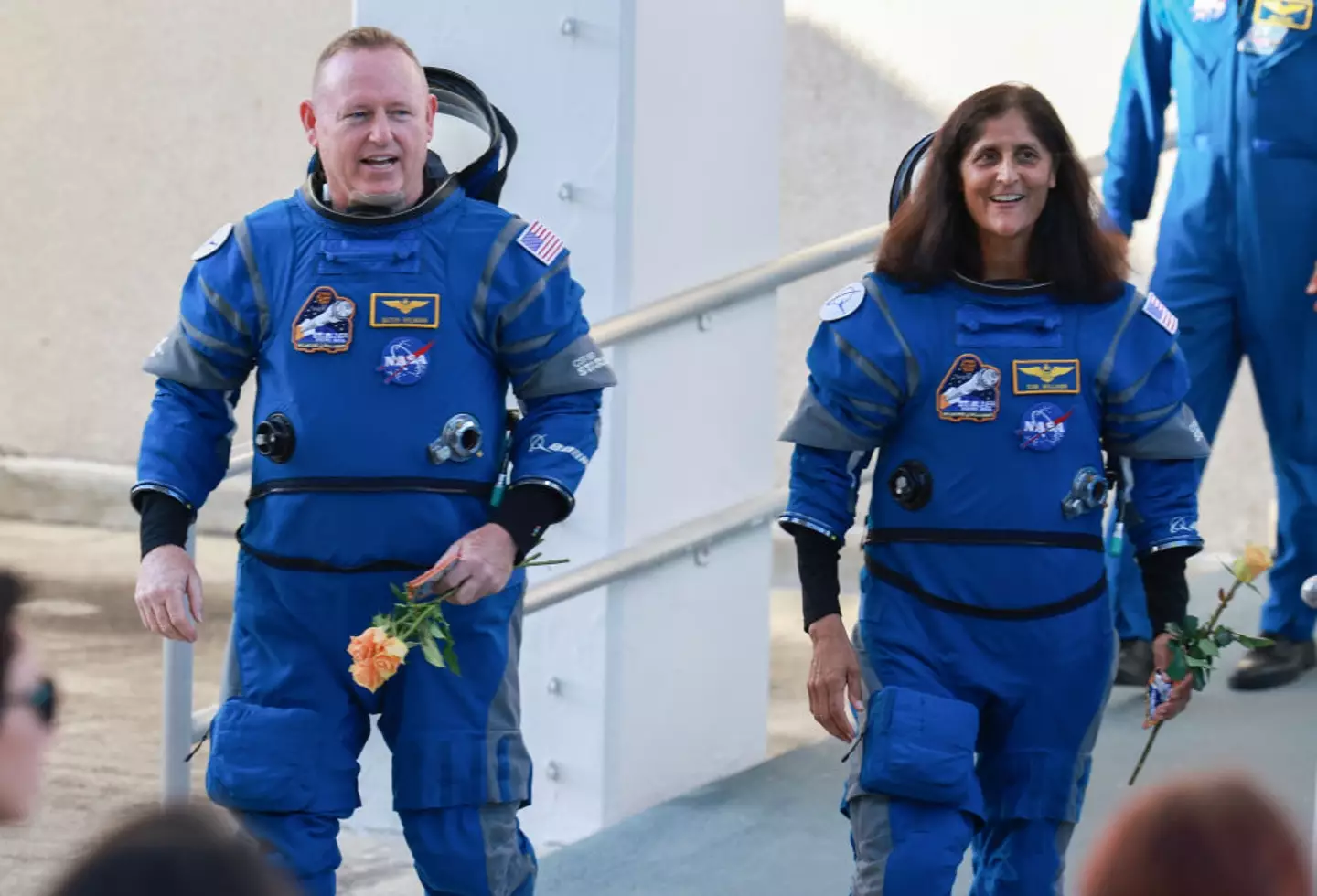

Both astronauts will be immediately taken to a medical rehabilitation facility after they land back on Earth (Joe Raedle/Getty Images)
In an interview with the Daily Mail, pulmonologist and Air Force veteran Dr. Vinay Gupta has revealed why spending time in space can be dangerous for the health of astronauts:
“The human body needs the Earth’s gravitational pull, and in absence of that, a lot of things are not functioning correctly,” explains Dr. Gupta. “The reality is, they’re effectively getting a fraction of the sort of exercise that we all take for granted just by walking in [Earth’s] gravity. Invariably, despite them doing all the right things {which I know they are) you’re going to see a decrease in muscle mass and strength – no question.”
On top of this, Dr. Gupta has expressed his concerns around the radiation that Williams and Wilmore will have been exposed to, prompting physicians to conduct “:a more proactive strategy for cancer screening,” just to be extra careful.
Featured Image Credit: NASA


Sunita Williams and Butch Wilmore are finally due to land back on Earth, and some 280 days after they stepped onto the International Space Station, they’re due to be rescued NASA’s Crew-10 relief team.
While the original mission was only due to take eight days, issues with their craft meant it was flown back unmanned and the pair were forced to wait for a new crew to fly up to replace them on the ISS.
There were plans to put the Crew-10 team on a new Dragon spacecraft, but due to mounting pressure and complaints that Williams and Wilmore had been ‘forgotten’ by the Biden administration, NASA eventually settled on reusing an existing Dragon.
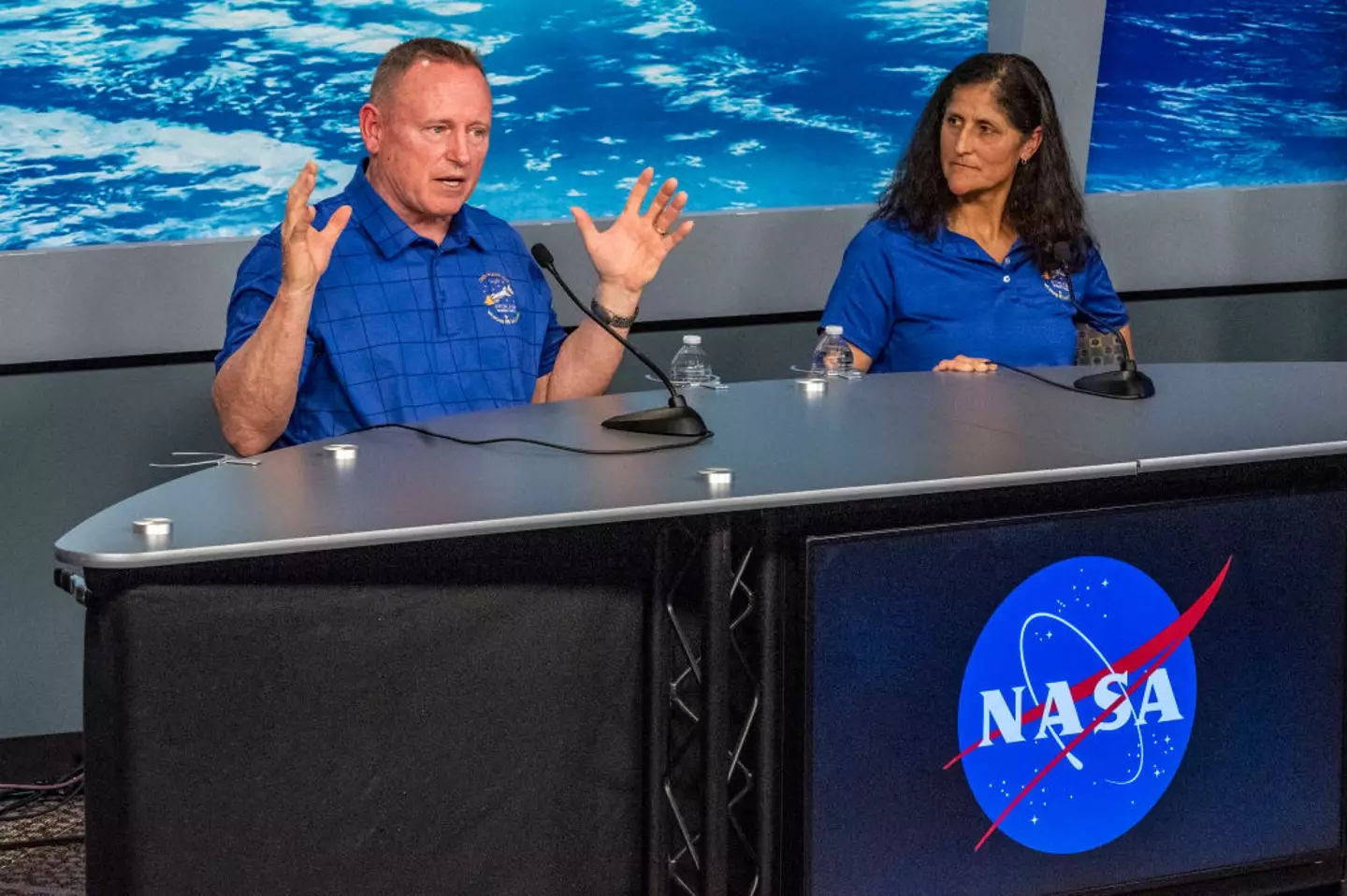

Wilmore and Williams have been on the ISS since June 2024 (Houston Chronicle/Hearst Newspapers / Contributor / Getty)
Although Williams has insisted the astronauts aren’t stranded, we’re sure they’ll be glad to get home after missing birthdays, Thanksgiving, and New Year celebrations.
The dynamic duo will immediately be rushed off on a stretcher for a ‘brutal’ rehab regime, but more than catching a glimpse of them landing, you’ll soon by able to spot the ISS.
Looking at NASA’s Spot the Station site, the ISS will be visible from the Kennedy Space Center for four minutes on Thursday, March 13.
Those who want to look to the skies will be able to see the ISS at 8:36 PM (local time), appearing at 10° above WNW and disappearing at 10° above N.
There are plenty of other positions you’ll be able to see the ISS. Those at the Statue of Liberty will be able to snatch a seven-minute glimpse on Friday, March 14 at 7:50 PM.
President Donald Trump can get a six-minute look on March 12 at 7:49 PM, or five minutes on March 13 at 8:38 PM.
With Musk being awarded a lucrative contract to destroy the ISS, you might want to get a look while you still can. Even though the SpaceX boss has said he wants to deorbit the space station in the next two years, Williams herself has suggested it would be wrong to do it before 2030, saying the ISS is currently in its prime.
The ISS has happily been sat up there since 1998, and despite being some 250 miles above us, the fact it circles the Earth 15.5 times a day means it’s often not too hard to catch a glimpse of.
NASA says that although the ISS looks a bit like an airplane moving across the sky, the fact it flies at 28,000 kilometers per hour means it’ll appear much quicker. Thankfully, the fact its roughly the size of a football field means the ISS isn’t too hard to spot with the naked eye – as long as the horizon isn’t cluttered and the skies are clear.
The Spot the Station site can pinpoint locations around the globe, meaning it’s not just those in the USA who’ll be able to take a look at the ISS in all its glory.
With Williams and Wilmore due to land on March 16, their nine-month extended stay in space is nearly at an end.
Featured Image Credit: SCIEPRO / Getty


Space is an incredibly different environment for the human body compared to Earth, and that’s why two ‘stranded’ astronauts might find their skin to be ‘baby-like’ upon their return to Earth, alongside countless other changes to their health.
NASA astronauts Suni Williams and Butch Wilmore initially went to the International Space Station (ISS) in June 2024 for a short eight day trip, but issues with their Boeing Starliner spacecraft and delays for their return flight have left them ‘stranded’ in space for over nine months now.
Typically astronauts aren’t supposed to stay for longer than six months in space, but technical issues with the SpaceX Crew-10 Dragon expedition scheduled to replace them on board the ISS have left Williams and Wilmore stuck for 282 days and counting.
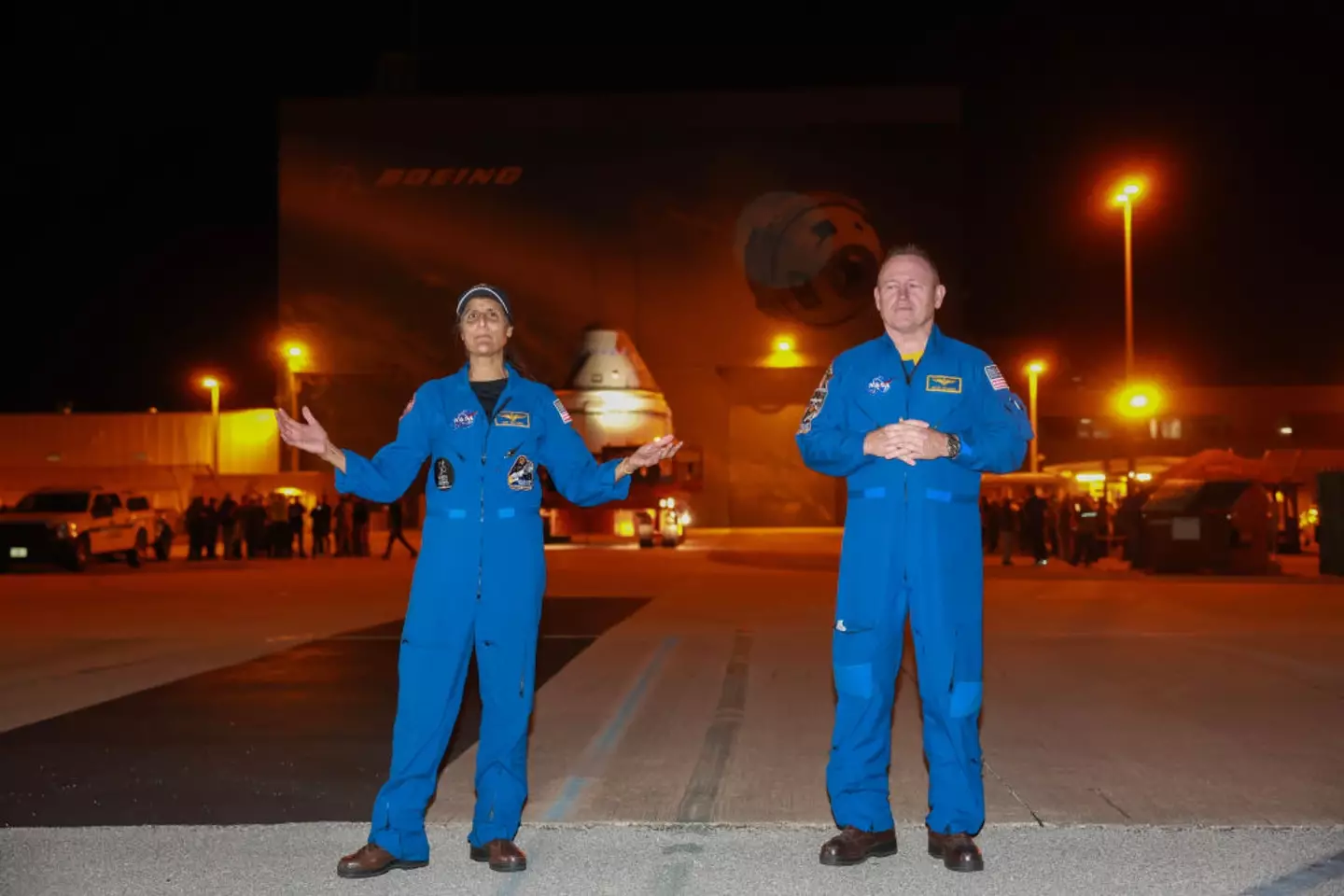

Williams and Wilmore have spent over 9 months on the ISS, but their return should hopefully be imminent (Joe Raedle/Getty Images)
SpaceX was supposed to launch their return flight on Wednesday, but issues persisted causing this to be pushed back once again.
However, while their return back home will be a major relief for both astronauts, it won’t provide the immediate return to normal daily life that you might expect.
The pair will be stretchered to a medical facility as soon as they successfully land, similar to the four Crew-8 astronauts that landed last November, where they will undergo intense physical rehabilitation over the course of around six weeks.
This is due to the countless changes to their body and overall health that come as a consequence of extended stays in space, of which include ‘baby-like’ skin, as reported by The Guardian.
Due to the low gravity nature of existing in space, astronauts clothes typically hover or float slightly above the skin, giving it a heightened level of sensitivity that you only really experience when you’re a baby.
This, in turn, will make clothes back on Earth feel like they’re sandpaper, as your body isn’t used to the contact and roughness of having something constantly resting on your skin.
That’s unfortunately far from the only health worry that Williams and Wilmore will experience upon their return to Earth, as changes in gravity also cause significant and often irreparable bone density loss, alongside considerable muscle loss which can affect your ability to walk and even your heart.
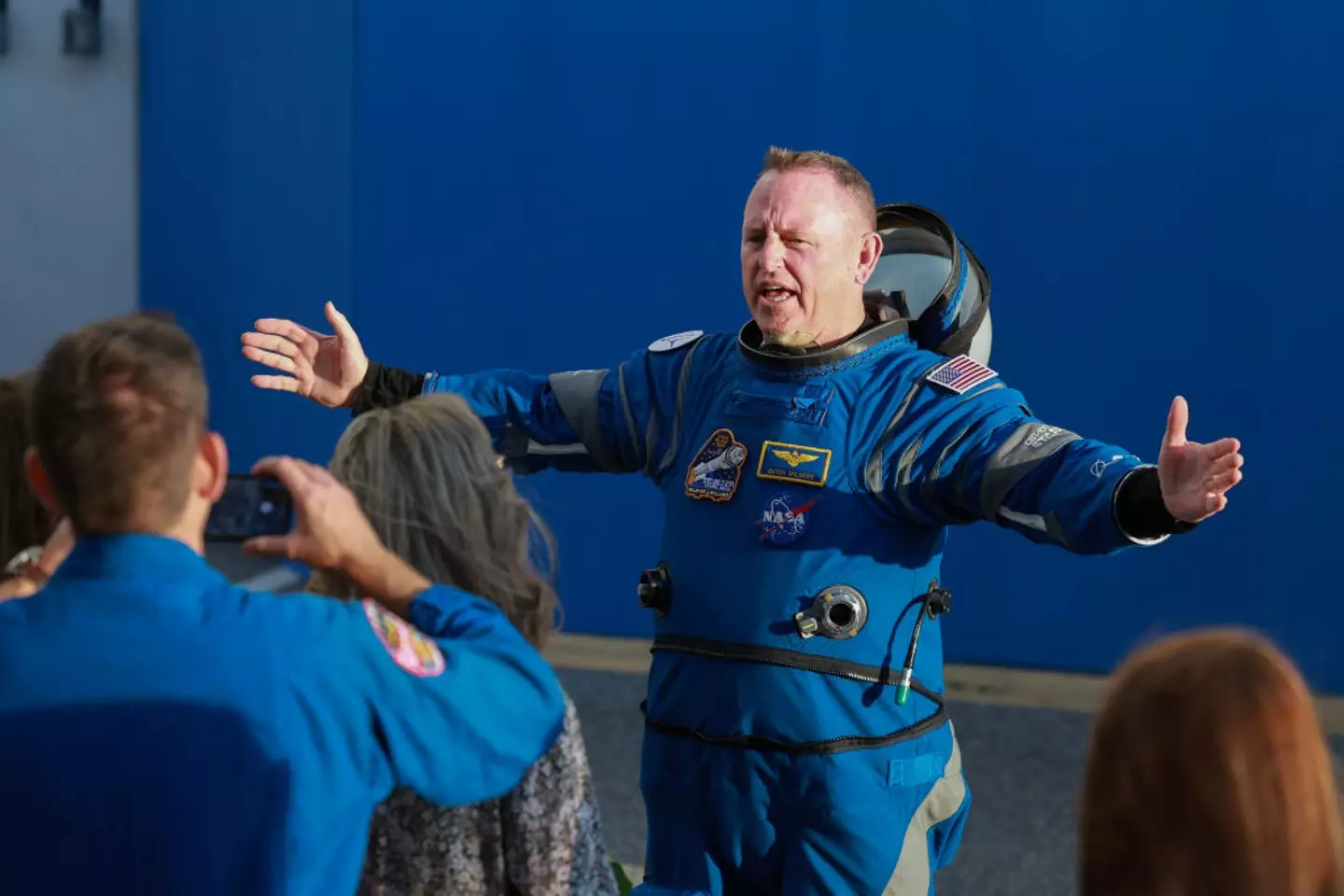

Lack of gravity in space significantly weakens your muscles, as they don’t have to work as hard (Joe Raedle/Getty Images)
As gravity isn’t weighing down your muscles your body doesn’t have to work anywhere near as hard, and while this might sound nice in the short term, it weakens your body and becomes a major problem when returning back home.
Scientists have compared extended stays in space to being bedridden or comatose in hospital, and you require major physical rehabilitation in order to return to normal bodily functions, despite the fact that both conducted rigorous daily exercise while on board the ISS.
They also have to worry about the dangers of cancer due to radiation exposure while in space, and one doctor has called for more proactive screenings in these medical facilities in order to avoid dangers that we might not yet expect or understand.
Featured Image Credit: Joe Raedle / Staff / Getty


Although Sunita Williams and Butch Wilmore were only supposed to go on a quick jaunt to the International Space Station in June 2024, their return mission was scuppered due to issues with their Boeing Starliner. This left them up in space for nine months.
Williams might insist that the pair haven’t been ‘stranded’ in space, but that hasn’t stopped the media coining the idea and President Donald Trump using their story to promote Elon Musk’s SpaceX.
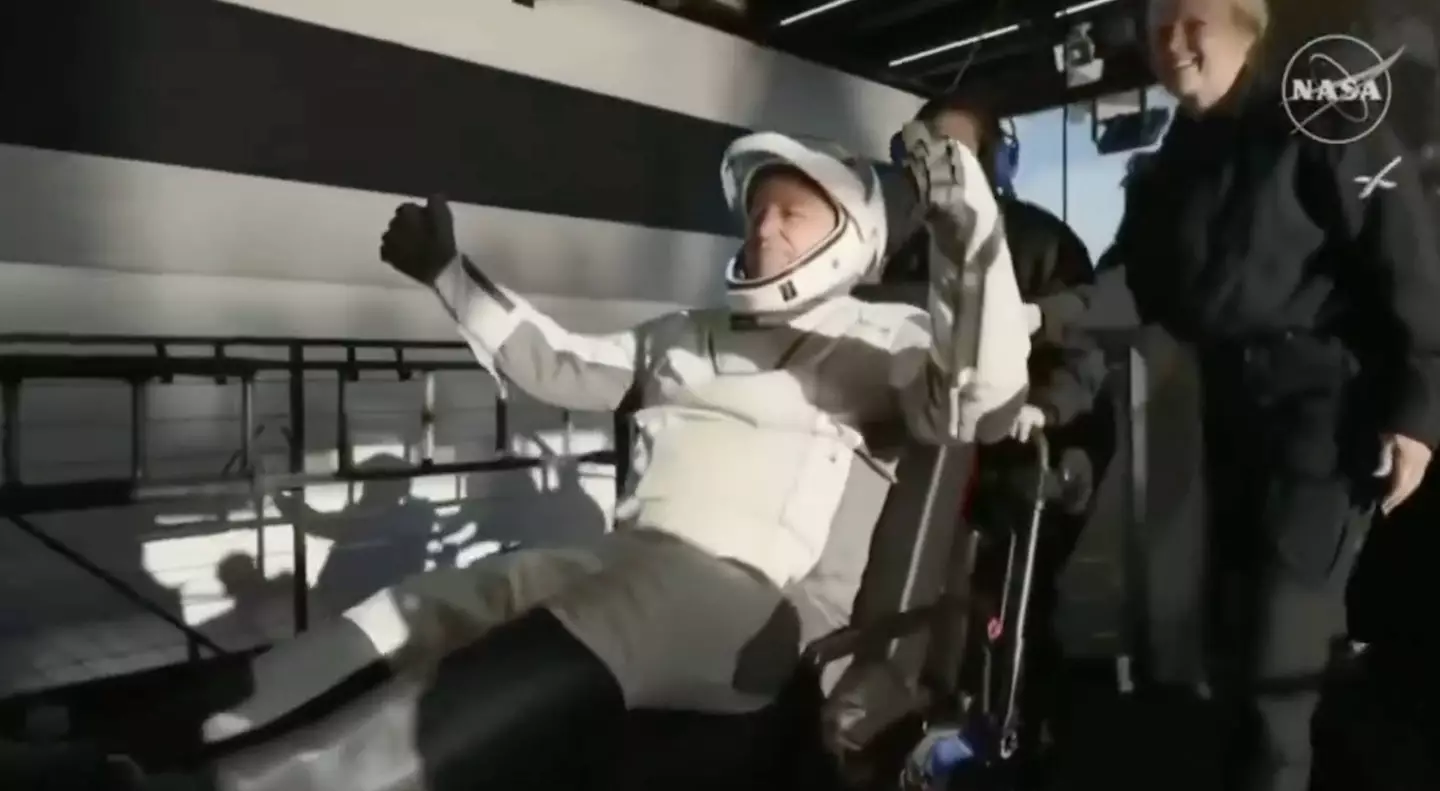

Wilmore was happy to be back on Earth (NASA)
The tech billionaire claimed that the Biden administration ‘abandoned’ Williams and Wilmore up there, but now, they’re finally back on terra firma.
Despite a March 12 launch for the Crew-10 relief crew being aborted at the last minute due to issues with the hydraulic system, and a second attempt called off due to bad weather, it was third time lucky as a March 16 mission led to emotional scenes where those aboard the ISS met with the Crew-10 astronauts.
After a brief handover, a NASA livestream confirmed Williams and Wilmore left the ISS at 1:05 a.m. EST on March 18, meaning they were scheduled to make a splash off the coast of Florida at around 5:57 p.m. EST. (21:57 GMT).
Even though we were told that the astronauts would be immediately rushed off via stretcher to undergo a ‘brutal’ recovery regime due to their unexpectedly long stay in space, we had to be reminded that the pair would be quickly carried away. At least there were plenty of smiles as they went to be checked over. In the aftermath, the White House wasted no time in sharing its thanks for the POTUS.
Posting on X, the official account wrote: “PROMISE MADE, PROMISE KEPT: President Trump pledged to rescue the astronauts stranded in space for nine months. Today, they safely splashed down in the Gulf of America, thanks to @ElonMusk , @SpaceX , and @NASA !”
These sentiments were then shared by Musk, who retweeted the post.
Williams and Wilmore had already thanked Musk and Trump for their help in getting them home, and it’s clear the White House has similar praise for the Commander-in-Chief.


